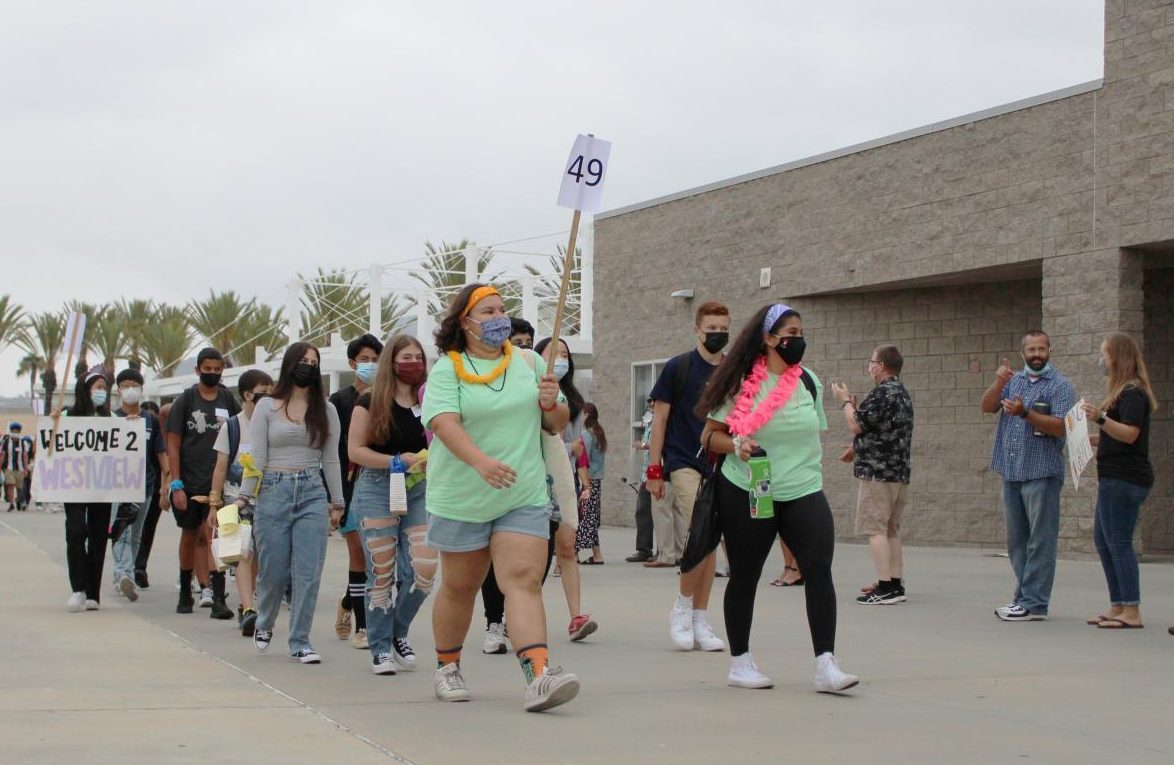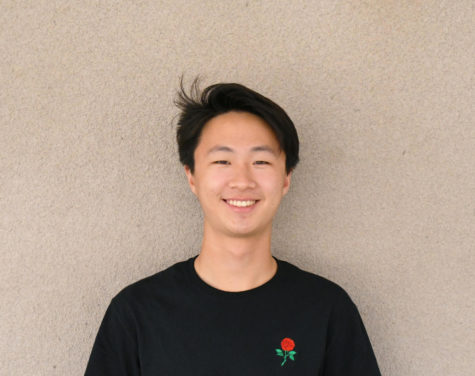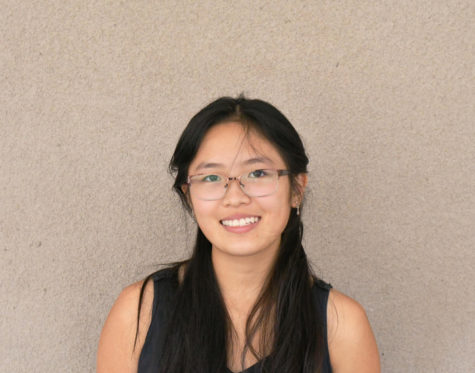Reopening allows students to adjust
August 27, 2021

After a year and a half away from campus, students finally returned to full-time school on campus Aug. 18.
In the first two days, Link Crew leaders in light lime shirts led both freshmen and sophomores through classrooms, giving previously all-virtual sophomores a chance to experience physical school. For many underclassmen, it was the first time they had been on school grounds.
Before classes began, students gathered together in clusters in the plaza. For Connie Zhu (11), it was the first time she had seen some of her friends in-person since the pandemic had begun.
“Keeping up when you’re not physically in contact is a lot harder,” Zhu said. “I really appreciate being able to actually go up to a person and say hi.”
Beyond this newfound aspect of physical proximity, there were other changes that needed to be adjusted to.
“I really wish we could eat inside,” Zhu said. “While I understand why we shouldn’t be in classrooms during lunch, it is disappointing that we’re not all the way back to how things used to be.”
Given the differences between what they were familiar with and how things are now, both students and teachers were unsure of how to approach this tentative step towards normalcy. For Waverly Huang (11), the first day back felt a little unreal.
“Honestly I thought it would be a lot harder for me to make the jump back into an in-person ecosystem,” Huang said. “I was really nervous that we were going to hear that reopening had been postponed or delayed in the week leading up to Aug. 18.”
For freshman class president Gabriel Sanchez Franz (9), after nearly two years of middle school online, the high school experience felt a lot more spirited than what he was used to.
“I felt really included,” he said. “Even though I’ve only been here for a few days, everything feels really normal—besides, I guess, the mask part, but even that almost feels like a normal part of life now.”
For many students, the difficulty of returning is understanding what is considered ‘normal’ and what isn’t.
Morgan Feng (12) missed the small social interactions that simply weren’t possible via Zoom.
“Being back and being surrounded by other students—not just talking to your friends, but the random friends you make and the random interactions you have with people you might not already know is something I really missed,” he said.
Even for upperclassmen, acclimatizing to this version of school has been difficult at times. One of the biggest changes to school policy, by far, is that masks obscure almost every face in sight.
“Sometimes it’s hard for me to figure out who is who since most people have half of their faces covered,” Zhu said. “So many people have changed a lot that it’s honestly kind of surprising.”
Besides new hair colors and growth spurts, another physical adjustment was one that had to do with the sheer number of students on campus.
“In Chinese there’s this saying that’s basically the equivalent of ‘mountains of people, seas of people,'” Huang said. “That’s basically how I feel about seeing everyone.”
Like Huang, Zhu said she was overwhelmed by how many students there were around her during lunch.
As she described it, the students clustered everywhere reminded her of huge flocks of pigeons, grouped together across the plaza. While she is familiar with the campus itself, seeing so many new people all at once was disconcerting.
“I’m not sure if it’s just because I’m not used to being back in school,” Zhu said. “It’s just kind of jarring since we’ve all been told to keep away from each other for so long that it’s become kind of ingrained.”
Still, to Huang and Zhu, being back in-person is like a breath of fresh air compared to the comparatively restrained Zoom environments they had become used to.
“I actually get to talk to people between classes now,” Zhu said. “The casualness of conversation is exhilarating, because when everything is online it’s a lot harder to just keep up a conversation.”
Principal Tina Ziegler said that as she visited classrooms, the energy and excitement she felt was reminiscent of a “normal” year—only being amplified by the number of people on campus.
“It is a lot more crowded,” she said. “I’m not sure if that’s because it’s been so long or if it’s actually more crowded [than normal]. I think everyone’s just seeing friends and getting back into it.”
Science teacher Shannon Skelton said that teaching on campus immediately felt more smooth than classes via Zoom.
“I expected a lot more hesitancy from our students in terms of being back in the classrooms,” she said. “ But I thought that people were really excited to be here. I think everything I pictured and dreamed [in the days leading up to the first week of school] became reality.”
While for many teachers, in-classroom learning feels much better compared to virtual learning, there are still some drawbacks.
“The most difficult part for me was trying to learn their names right away with face recognition,” math teacher Jennifer Park said. “[With the masks], I just did not recognize any [students].”
Still, graphic design teacher John Nacu said that despite the masks, being able to hold eye contact with students makes a big difference in interpersonal connection as opposed to teaching to black boxes.
“It almost feels like I’m a brand new teacher,” he said. “This year, I’m trying to make sure I really get to know each of my students individually to take advantage of this time where we’re actually here in person.”



